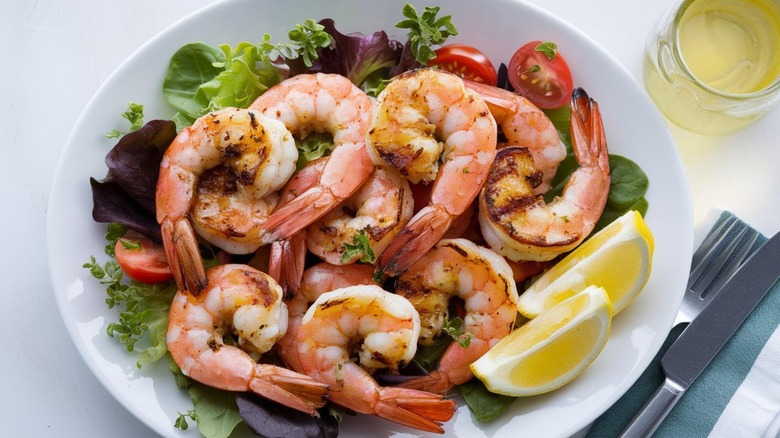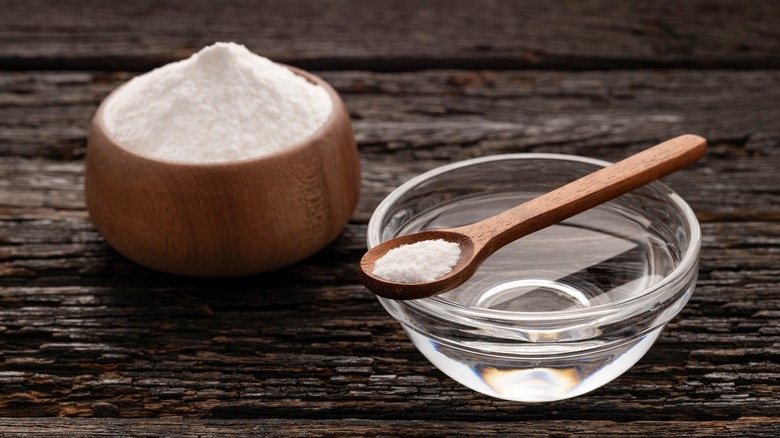Why Adding Baking Soda To Shrimp Is A Game Changer
Cooking shrimp can be an exercise in frustration. The little crustaceans fry or grill in just minutes and, if you're not paying attention, they transition from raw and fleshy, to rubbery and overcooked. It's one of the many cooking mistakes to avoid with shrimp. Another mistake? Not brining shrimp in salt and baking soda. Wait, baking soda?
Why, yes. One of the challenges with cooking (or overcooking) shrimp is getting that crisp exterior and juicy, firm interior we love so much. Too often the flesh ends up chewy, flavorless, and even mushy if improperly handled. Baking soda is the secret weapon for creating plump, flavorful shrimp with just the right amount of snap when you bite into them. You may already know that baking soda is key to tenderizing steak, and a similar velveting technique (often using cornstarch instead of baking soda) is used with Chinese-influenced dishes like beef and broccoli. What works for beef, also works for shrimp.
Why brining shrimp with baking soda works
Like all meat, shrimp's proteins bond together with heat, tightening the flesh and squeezing out moisture. The result is a dense, chewy structure. When it comes to quality steak cuts, characteristics like marbled fat help to add moisture to the mix. Shrimp doesn't have that luxury. Instead, brining in baking soda and salt traps the moisture inside, creating a protective layer and drawing moisture back into the flesh. It also raises the pH (less acidic, more basic) of the proteins, interrupting the bonding process.
Dry brining is probably the easiest method to follow, coating each shrimp efficiently in as little as 15 minutes, but you can also make a slurry with a little water, baking soda, and salt. Whether dry or wet brining, place everything in a bowl and move the shrimp around for total coverage. Brine your shrimp in the refrigerator, as it's too easy to forget and leave them at room temperature too long, inviting harmful bacteria. Let the shrimp brine for up to an hour or two (no more or it gets mushy, just like when marinating meat), and pat dry before frying or grilling. Once cooked, the result is a plump, juicy shrimp with a distinctive snap to it, like the texture of a grape tomato.

